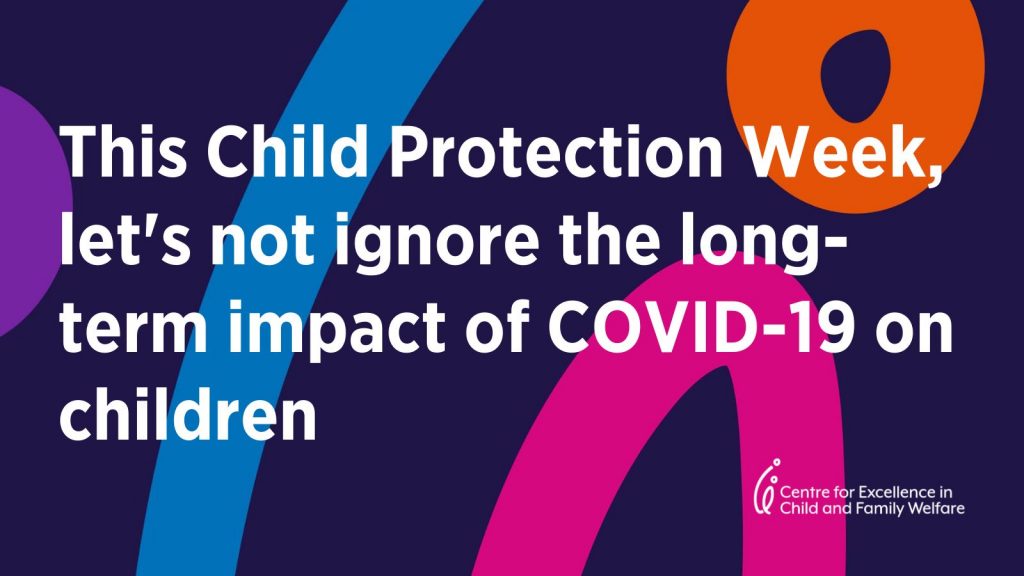By Deb Tsorbaris, CEO Centre for Excellence in Child and Family Welfare
We are experiencing a time of disruption and upheaval. Living through a pandemic has required us to change and adapt to challenging circumstances. For those of us working in the child and family services sector, it has meant being innovative in the ways we work with families to keep children visible and safe.
Community organisations have adopted online technologies, virtual counselling and risk assessments to support and care for children. But without the safety net of school, childcare and other universal services, the task is even harder. We know there are some children who are falling through the cracks and whose needs aren’t being met, or who are at risk of harm.
Before the pandemic, the numbers of children entering the out-of-home care system were steadily increasing at a rate of 10 per cent per year. In 2018-19, there were almost 12,000 children in care in Victoria. Recent modelling has predicted that the increasing pressures on families arising from the pandemic could see this number rise to 27,000 over the next five years.
As we have seen with the aged care system, this pandemic has thrown a spotlight onto current stressors and weaknesses in our service responses and on existing social and structural inequalities and disadvantage. What’s clear is that we have a steadily growing group of children and families who need help. We can’t continue to accept as inevitable that an increasing number of children will be removed from their families and placed into an underfunded and already stressed care system.
The Centre for Excellence in Child and Family Welfare, the peak body for child and family services in Victoria, recently surveyed the child and family services workforce to find out the impact that COVID-19 has had on Victorian children and families. We were told that Victorian families are facing real material hardship, with many finding it difficult to provide enough food for their families or stable housing. Many children are finding it difficult to learn in lockdown, with families unable to afford internet connection or reliable technology. Children with a disability are finding it difficult to access the support that they and their families rely on.
We are seeing an escalation in family conflict, violence and aggression. Family separation and isolation coupled with heightened anxiety about the health and economic impact of the pandemic have led to increased reports of mental stress and illness. This is having a real impact on children and young people.
The last time Australia faced this level of economic uncertainty was in the 1990-91 recession. The unemployment rate rose to over 11 per cent in 1992, but to 17 per cent among young people aged 18 to 22. It took years for the employment rates to rise and for incomes to reach pre-recession levels, with long-term consequences for young people’s outcomes.
While Australian studies on the impacts of recession on children is limited, we know from international research on the Great Recession of 2007-10 in developed nations that child poverty rates rose, poor health outcomes associated with poverty and food insecurity increased, and there was a marked decline in family wellbeing because of loss of income, insecure work and housing stress. Research by UNICEF found that 1.6 million more children were living in severe material deprivation from 2008 to 2012 across 30 European countries.
The solution is not to wait for an escalation of stressors to accumulate within families to a crisis point and then to remove children and place them into care. Instead, we must all accept our collective responsibility to keep children safe. This means changing our focus from a crisis response to a whole-of-family approach that works to support families to keep children safe and to access the services they need.
It means making a commitment as a society to make sure that parents are not forced to choose between food for their children or paying the rent. That families can access timely medical and dental treatment for their children and can access specialists no matter where they live. And it means giving families the tools they need to make sure that their children do not fall behind in their learning because of the disruption caused by COVID-19 to education.
It is already clear that the pandemic and the recession it has triggered will profoundly impact our children’s future. We need to work together to develop a COVID-19 recovery plan that focuses on the needs of children and their families to make sure that no child is left behind.
Child Protection Week runs from 6 to 12 September.
Media contact: Christie Long, 0403 053 584 or christie.long@cfecfw.asn.au






